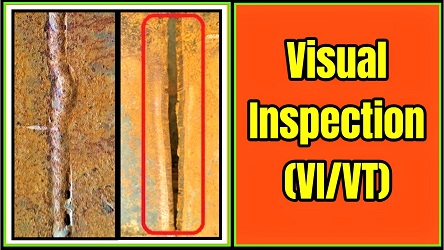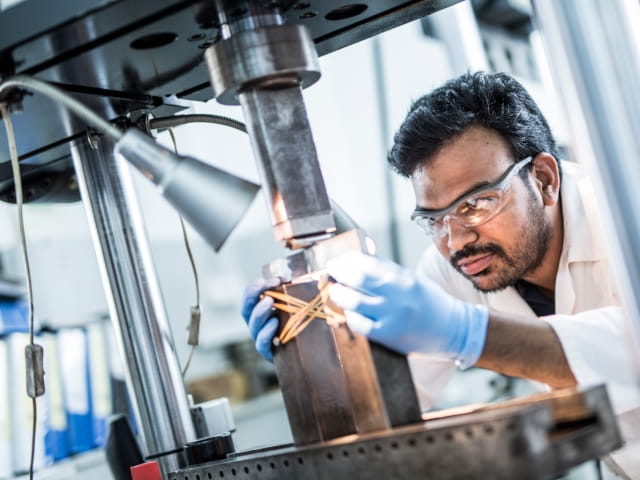How Welding Inspection Gilbert Arizona Can Improve Your Construction and Production Processes
Exploring the Significance of Welding Evaluation in Industrial Applications: Protecting Versus Failings and Enhancing Longevity
Welding examination offers as an essential line of defense in commercial applications, ensuring the architectural stability and dependability of bonded components. By systematically identifying defects such as porosity and insufficient blend, evaluations not just stop failures but also prolong the life-span of important assets.
Role of Welding Examination
Welding inspection works as an important safeguard in industrial applications, making sure that welded frameworks satisfy defined criteria of high quality and security. This procedure entails a systematic examination of welds to verify their stability, stamina, and conformity with well-known codes and specs. The function of welding examination is diverse, encompassing both visual evaluations and non-destructive screening methods, which might include ultrasonic, radiographic, or magnetic bit testing.

Furthermore, welding evaluation plays an essential duty in regulative conformity. Eventually, the role of welding inspection is essential in promoting safety and security, boosting performance, and protecting financial investments in industrial framework.
Usual Welding Defects

One of one of the most widespread problems is porosity, defined by tiny gas pockets entraped within the weld steel. This occurs due to contaminants or improper protecting gas, compromising the weld's stamina. Another substantial problem is incomplete combination, where the weld metal falls short to bond correctly with the base product, possibly bring about architectural weak points.
Fractures can also create throughout or after the welding process, usually associated to thermal stresses or improper cooling prices. Additionally, damaging, where the base steel is worn down along the weld bead, can damage the joint and is frequently brought on by extreme heat input or incorrect technique.
Additionally, lack of infiltration happens when the weld steel does not get to the origin of the joint, resulting in inadequate strength. Recognizing these usual defects is critical for assessors and welders alike to ensure that welded frameworks satisfy safety and security and efficiency standards, eventually stopping prospective failings in commercial applications.
Benefits of Regular Evaluations
Normal evaluations work as a vital secure in guaranteeing the integrity and longevity of bonded frameworks. These evaluations recognize potential issues and weak points that might endanger the honesty of welds, enabling timely remediation before issues rise. By implementing a structured assessment routine, organizations can dramatically lower the threat of catastrophic failings that might bring about expensive downtime, tools substitute, and even mishaps.
Additionally, regular evaluations add to improved quality assurance throughout the welding process. By sticking to a consistent evaluation timetable, business can ensure that their welding techniques satisfy established top quality criteria and ideal practices. This not only cultivates a culture of accountability however additionally urges continuous renovation amongst welding employees.
On top of that, normal evaluations promote much better maintenance planning. By determining deterioration early, organizations can purposefully schedule repairs and replacements, reducing interruption to operations. This positive method ultimately leads to prolonged property lifespan and improved overall performance.
Lastly, a commitment to regular examinations can improve a business's online reputation in the market. Stakeholders and customers progressively worth companies that prioritize safety and security and top quality, thus boosting count on and potentially leading to boosted service opportunities.
Industry Requirements and Rules
Following industry criteria and regulations is a fundamental element of welding assessment that matches the benefits of routine examinations. These criteria, established by organizations such as the American Welding Culture (AWS) and the American Culture of Mechanical Designers (ASME), offer a framework for best techniques in welding procedures, products, and examination techniques. Conformity with these guidelines ensures that Recommended Site welds satisfy the called for quality and safety and security criteria, dramatically minimizing the risk of architectural failings.
Regulatory bodies like the Occupational Safety and Health And Wellness Management (OSHA) better implement guidelines that shield workers and the environment throughout welding operations. By following these established criteria, sectors can enhance the integrity of their elements and frameworks, guaranteeing they carry out as meant under different functional problems.
Moreover, adherence to industry criteria fosters uniformity in top quality control, facilitating smoother interaction amongst stakeholders and governing agencies. This alignment not only reduces obligation dangers but likewise improves the credibility of organizations in open markets. Inevitably, compliance with welding requirements and policies is not merely a legal responsibility; it is an essential financial investment in safety and security, performance, and long-term operational success.
Future Trends in Welding Inspection
As industries proceed to evolve, the future of welding assessment is poised to incorporate sophisticated innovations that boost accuracy and performance. One of one of the most significant patterns is the fostering of automation and robotics in inspection processes. Automated systems can carry out assessments rapidly, minimizing human mistake and enhancing throughput in producing environments.
In addition, the assimilation of expert system (AI) and artificial intelligence algorithms will certainly allow anticipating analytics, permitting real-time analyses and proactive maintenance (Welding Inspection Gilbert Arizona). By assessing data from previous evaluations, these modern technologies can recognize patterns that could show potential failings, thereby extending the life expectancy of welded components

Furthermore, the pattern in the direction of digitalization will lead to boosted data monitoring systems that promote much better monitoring, reporting, and conformity with market requirements. In recap, the future of welding examination is characterized by technological innovations that assure to considerably boost reliability, safety and security, and functional efficiency in numerous commercial applications.
Verdict
To conclude, welding evaluation offers a vital function in guaranteeing the integrity and sturdiness of welded frameworks throughout different industrial applications. By recognizing click this site problems such as porosity and insufficient fusion, normal evaluations play a significant duty in danger mitigation and quality assurance. Adherence to market standards and regulations additionally enhances operational security and reliability. As developments in technology remain to advance, the future of welding assessment promises increased precision and effectiveness, eventually adding to the durability of important infrastructures.
Welding examination offers as a vital line of protection in industrial applications, making certain the architectural honesty and integrity of welded elements.Welding evaluation offers as an essential safeguard in commercial applications, making certain that bonded frameworks satisfy defined criteria of top quality and safety and security - Welding Inspection Gilbert Arizona. Ultimately, the duty of welding examination is vital in promoting safety and security, improving performance, and securing financial investments in commercial infrastructure
These requirements, developed by companies such as the American Welding Society (AWS) and the American Culture of Mechanical Designers explanation (ASME), offer a framework for finest practices in welding procedures, products, and evaluation strategies.In verdict, welding examination offers an essential feature in ensuring the integrity and sturdiness of bonded frameworks across different commercial applications.